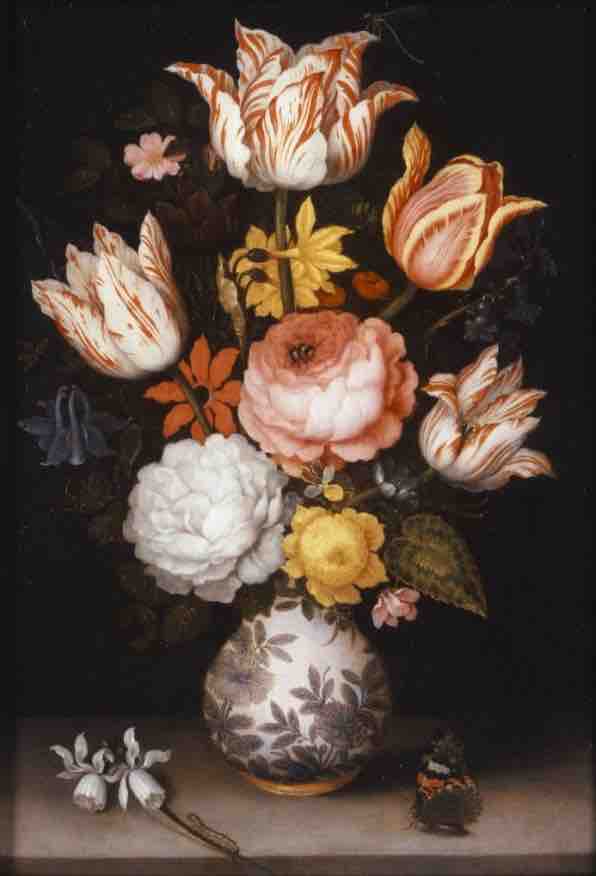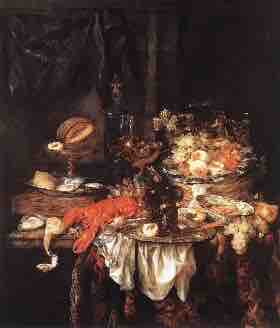Overview: Dutch Still Life Painting
The Dutch still life tradition was largely initiated by Ambrosius Bosschaert (1573–1621), a Flemish-born flower painter who had settled in the north by the beginning of the period and founded a dynasty. Early still lifes were relatively brightly lit, with bouquets of flowers arranged in a simple way. From the mid-15th century, arrangements that could fairly be called Baroque, usually against a dark background, became more popular, exemplified by the works of Willem van Aelst (1627–1683). Painters from Leiden, The Hague, and Amsterdam particularly excelled in the genre. In addition to still life paintings, the Dutch led the world in botanical and other scientific drawings, prints, and book illustrations at this time.

Flowers in a Porcelain Vase by Ambrosius Bosschaert the Elder
Bosschaert was an early still life painter who established a dynasty of flower painters.
Themes of Still Lifes
Still lifes offered a great opportunity to display skill in painting textures and surfaces in great detail, and with highly realistic light effects. Food of all textures, colors, and shapes—silver cutlery, intricate patterns, and subtle folds in table cloths and flowers—all challenged painters.
Flower paintings were a popular sub-genre of still life and were favored by prominent women artists, such as Maria van Oosterwyck and Rachel Ruysch. Dead game, as well as birds painted live but studied from death, were another sub-genre, as were dead fish, a staple of the Dutch diet. Abraham van Beijeren painted this subject frequently.
Virtually all still lifes had a moralistic message, usually concerning the brevity of life. This is known as the vanitas theme. The vanitas theme was included in explicit symbols, such as a skull, or less obvious symbols such as a half-peeled lemon (representing life: sweet in appearance but bitter to taste). Flowers wilt and food decays, and silver is of no use to the soul. Nevertheless, the force of this message seems less powerful in the more elaborate pieces of the second half of the century.
Initially, the subjects of still life paintings were typically mundane; however, beginning in the mid-century, the pronkstilleven ("ostentatious still life"), showing expensive and exotic objects, became more popular. Willem Claeszoon Heda (1595–c. 1680) and Willem Kalf (1619–1693) were leaders in this shift toward the pronkstilleven. In the works of all of the still life painters, colors tended to be muted, with browns dominating, especially in the middle of the century.

Banquet Still Life, by Abraham Van Bereyen, 1660
This work is an example of an ostentatious still life.
Despite the intense realism of individual flowers, paintings were composed from individual studies or even book illustrations, and blooms from very different seasons were routinely included in the same composition. The same flowers also reappear in different works, just as pieces of tableware do. In reality, bouquets of flowers in vases were not at all common in houses at the time; even the very rich tended to display flowers one by one in delftware tulip holders.